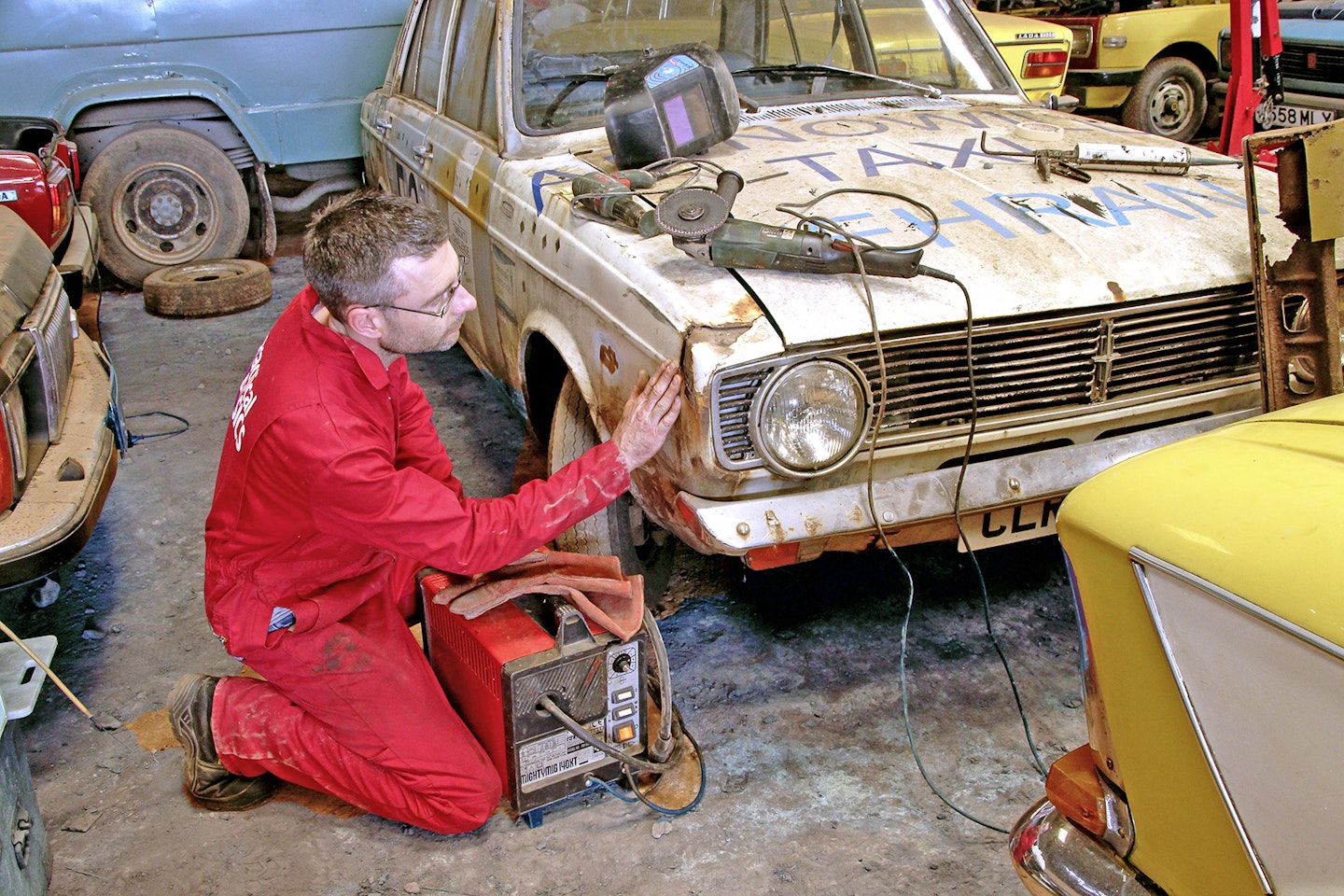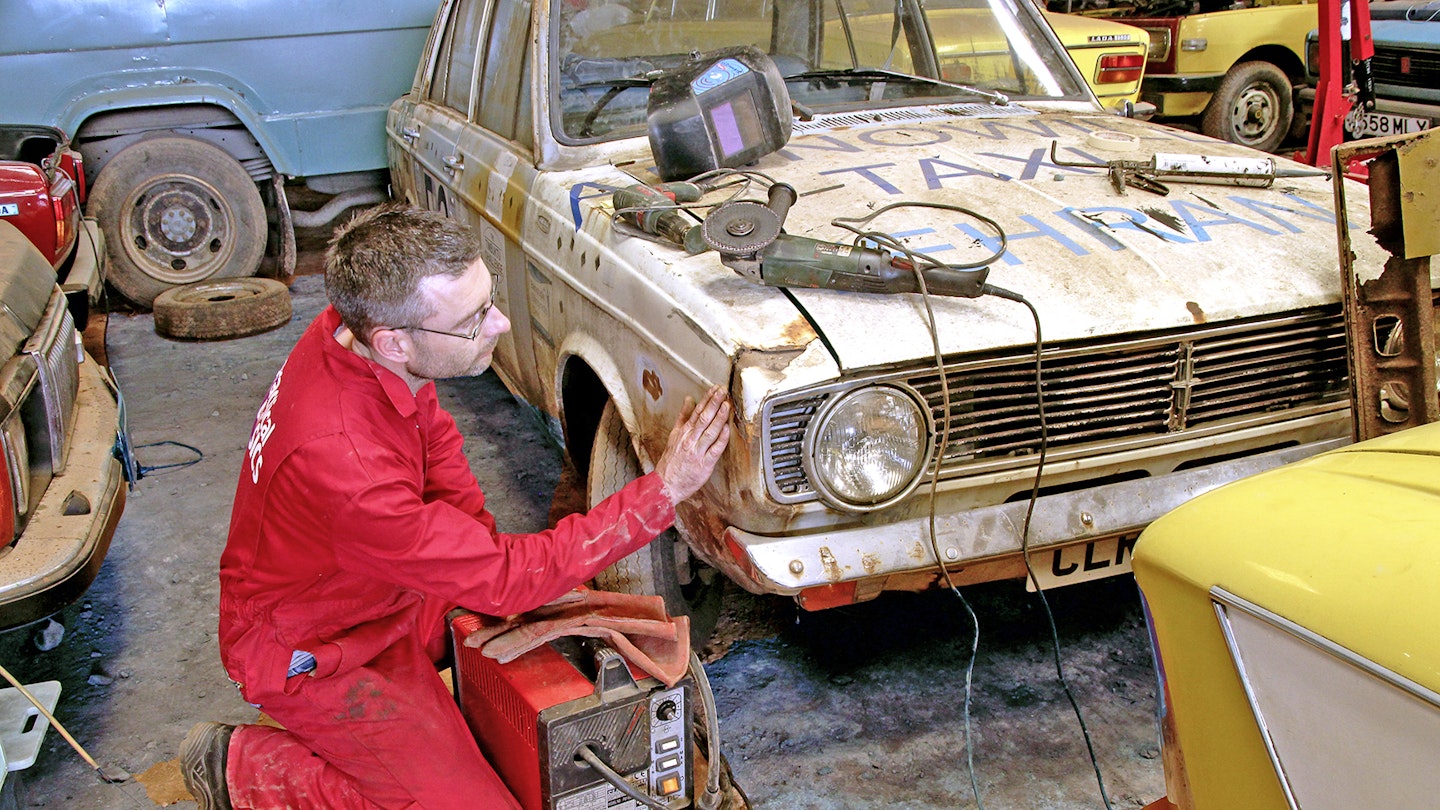
Answer: The bubbling is caused by water drawn through pinholes from underneath. Undersealing cuts this off, but the decaying surface means it soon comes loose and the process starts again.
It’s better to remove the corroded metal. A small patch is best removed with a pad saw or cutting disc in a Dremel. Finish with a file and don’t bend the surrounding metalwork – tape some card around the area in case the saw or file jumps out of the hole and scratches the paint. Get under the wing and scrape back as much loose underseal as you can around the dodgy area. Treat the rust and bare metal with rust remover.
Enjoying the read? Why not buy a full issue of Practical Classics magazine! Because nothing beats paper right?
The best results are achieved by cutting and shaping a patch that exactly fits the hole and butt-welding the edges, with a MIG welder on a fairly low setting or, ideally, a TIG welder. Alternatively cut an oversize patch, fit it under the hole and weld it from above. This will leave a slight depression that can be filled afterwards. This is easier, but less satisfactory. The open edges of the repair under the wing will need to be sealed carefully with seam sealer to avoid creating a water trap.
If you’re using a MIG welder, start by attaching the patch with a few tack welds. Apply more tack welds at 10mm intervals, then place further welds between these. Keep going until there’s effectively a continuous weld. Alternate the welds on opposite sides of the patch. Remove any high spots with a grinding disc, then make it perfectly flush with a rubber-backed sanding disc.
Get Practical Classics magazine delivered to your door every month with a subscription!
Roughen the repair area and apply a thin coat of body filler. Rub down and repeat until the surface perfectly matches the surrounding area. Carry out initial shaping with abrasive paper of 40 to 100 grit, then use fine wet-and-dry paper (up to about P600) for final finishing. Always use a sanding block or you’ll get an undulating surface. Remove dust with panel wipe and a tack rag before painting.
Mask the area and apply etch primer, then filler primer. Flat it back and put on at least two coats of aerosol cellulose paint. Allow the topcoat to overlap the existing paint a little. When it’s dry, blend the edges with the original paint using a gentle cutting polish. Brushed enamel topcoat is a good alternative.
Glassfibre filler is a bodge but avoids heat distortion. It should last indefinitely over a small hole if it’s applied to well-prepared and perfectly rust-free metal.
